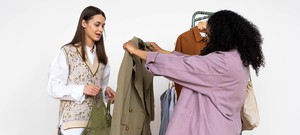- Clothes
- Bags
- Accessories
-
Inspiration
- Shoes
How to Choose Eco-Friendly Shipping When Buying Clothes
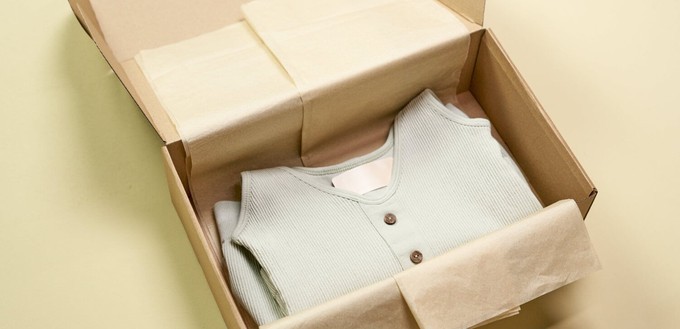
How disappointing is it when you buy ethical garments made with eco-friendly fabrics… but they’re all wrapped in plastic once you receive them?
Choosing sustainable clothes is a great start. However, how they’re packaged and delivered makes a big difference for the planet, too.
So, let’s look at the most eco-friendly shipping methods and sustainable packaging (as well as what you should avoid or take with a pinch of salt).
What is eco-friendly shipping and packaging for clothes?
By eco-friendly shipping in fashion, we mean packaging and delivery options with the lowest possible impact on the environment, especially when it comes to carbon emissions and waste.
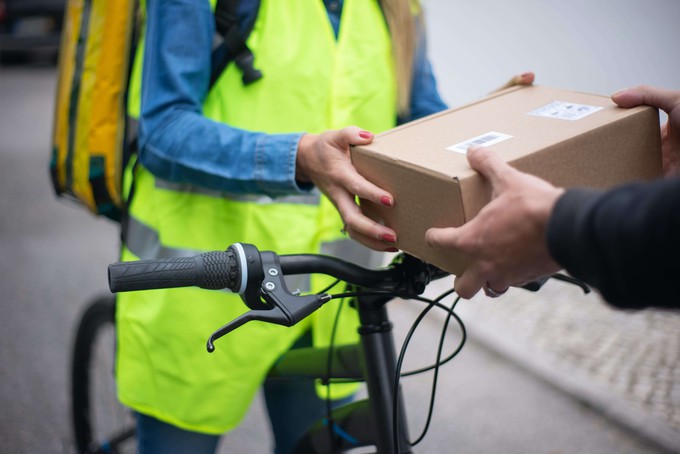
Why is sustainable shipping and eco-friendly packaging important?
Because it’s not just about the actual clothes: their packaging and shipping also have an impact on the environment!
For example, if they’re wrapped in polybags and single-use plastic, their packaging will stick around in landfills for centuries or even 1,000 years.
And when clothes are delivered via planes and vans that rely on petrol? Their carbon footprint grows even further.
Fast fashion doesn’t usually take any of this into account—which is not surprising, since its business model is all about churning out cheap clothes without worrying about their hidden cost.
But by choosing eco-friendly packaging and delivery options, you can make your wardrobe even more sustainable.
Most sustainable packaging options when buying clothes
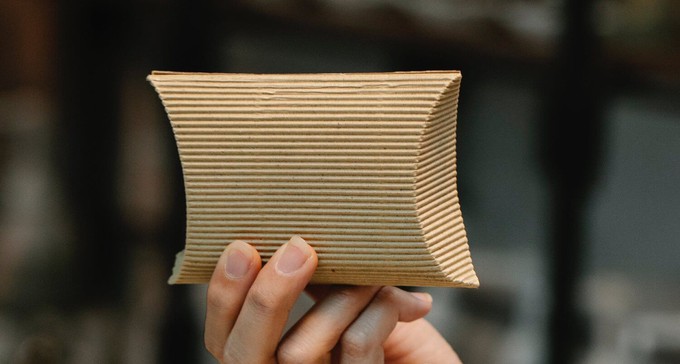
Plastic-free packaging
141 million tonnes of plastic packaging is produced every year. And it’s mostly single-use, so… straight into the bin (and then landfills) it goes.
That’s why plastic-free packaging—like paper mailer bags and some of the following options—is usually a step in the right direction.
Recycled packaging
Recycled materials tend to have lower carbon footprints than those created from scratch. They also reduce waste by keeping the original material in circulation for longer.
- Carton boxes and postal bags made from recycled paper are a fantastic sustainable packaging option
- Recycled plastic packaging still comes with a big problem: it’ll end up in the bin and take centuries or millennia to decompose. Still, it’s a little bit better than virgin plastic packaging
Innovative and biodegradable packaging
More and more brands are also coming up with creative and innovative packaging like:
- Plant-based packaging made from corn, mushrooms, or seaweed
- Packaging that’s both biodegradable and… plantable!
Reused and reusable packaging
Circular fashion—which is all about designing items that can stay in circulation for longer and be reused—is slowly growing in popularity.
Some innovative brands are taking it one step further by doing the same for their sustainable packaging.
For example, you might be able to:
- Return your packaging by post for free (and in some cases, you’ll even get a discount or reward)
- Choose ‘returned packaging’ instead of new packaging at check-out with resourceful brands like Lanius
Compostable packaging
Now, this is a tricky one because… the definition of compostable is still very vague and not fully regulated. So, that leaves plenty of room for greenwashing.
You might have also been led to believe that compostable = biodegradable and that you can put this packaging in your food bin (not true, unfortunately).
Plus, lots of ‘compostable’ packaging is only ‘industrially compostable.’
However, if a fashion brand offers home compostable packaging and you actually have a composting bin, then it IS a more sustainable packaging option.
Most sustainable shipping methods and eco-friendly delivery options when buying clothes
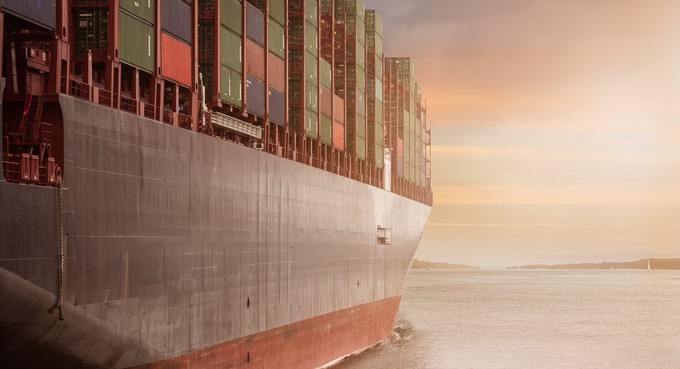
Boat shipping
Of course, when buying clothes from international stores, your carbon emissions are going to be higher, but you can still make greener choices.
With deliveries, planes generate 47 times more emissions than cargo ships.
It’s unlikely that a brand will mention ‘ocean shipping,’ but if you can be patient, just avoid choosing ‘fast shipping’ (as that usually means ‘by plane’).
Bike deliveries
They’re quite popular here in the Netherlands (for example, brands like Solitude the Label use PostNL, which delivers by bike whenever possible).
Bikes are obviously more sustainable delivery options because they don’t involve any fossil fuels. So, we hope more countries, cities, and brands start embracing them!
Electric delivery vans
On average, their carbon emissions are 55% lower than diesel vans.
So, when buying from fashion brands that partner with electric vehicle couriers, you’ll be choosing a more eco-friendly shipping method.
In-store or pick-up
The ‘last mile’ is usually what makes the biggest difference when it comes to carbon emissions.
So, if an online brand also has a store in your town or if there’s a centralised pick-up option, that’s usually better for the environment.
However, it only makes sense if you walk there or would drive there anyway (for example, because it’s close to where you work).
But if you were to drive all the way there just to pick up your garment, it’d defeat the purpose of in-store pick-ups.
And realistically, due to their lower margins, it’s rare that sustainable brands have physical stores on the high street.
Deliveries that off-set carbon emissions
Some brands calculate their monthly shipping emissions and make their deliveries carbon neutral by funding:
- Tree planting
- Carbon projects that remove carbon from the atmosphere or prevent it from being released in the first place
However, be wary of this ‘sustainable delivery method’ because off-setting is often used for greenwashing.
So, if a brand is promoting it as a sustainable shipping option, check that they’re actually sharing information about these projects.
If you can’t find anything because they simply expect you to take their word for it? It’s usually bad news.
How you can make a difference

You can always share constructive feedback, if you want.
Did a brand send you sustainable clothes wrapped in lots of plastic packaging? Or include too many labels and physical documents that you binned straightaway? Let them know!
Just keep in mind that nobody’s perfect. Sustainable fashion brands have lower margins than fast fashion, and they usually try really hard to be more eco-friendly. And in some cases, other than choosing a specific courier, the shipping side of things is out of their hands.
But if you focus on the best eco-friendly shipping methods and packaging covered in this article (whenever possible, at least)? You’ll definitely make your online shopping even greener.
Found this helpful? At Project Cece, we brought hundreds of fair trade brands in one place and added filters to narrow down your choices. You can also start receiving our tips and inspiration to make even more sustainable fashion choices.
Share our story
Related articles
Recycling in Fashion: Can It Solve Its Environmental Problems?
18.6 million tonnes of clothes are sent to landfills EVERY YEAR. Surely, recycling in fashion is the obvious solution, right? Mmh, not exactly. Here’s why.
What New Sustainable Fabrics & Materials Are Designers Using?
Recycled plastic, coconuts, and even… milk! Here are some of the most innovative new sustainable fabrics to reduce the environmental impact of clothes.
The Journey of Your Clothing: A Typical Fashion Supply Chain
Ever wondered how clothes go from raw materials to finished goods? Here’s what a fashion supply chain looks like & the difference between a fast/slow approach.
Project Cece is a platform that collects ethical fashion from vetted brands and shops in one place. Browse ethical fashion for women and men and find items that fit your style, budget and values!
